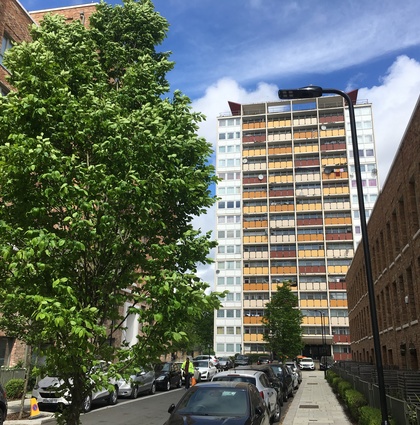Author: Simeon Shtebunaev
The presumption in favour of sustainable development underpins decision-making across the built environment sector in the UK. The three objectives of sustainable development in NPPF paragraph 8 are well understood – economic, environmental and social – yet when we consider their application, social sustainability often tends to fall to the wayside. So, what are some of the tools to achieve social sustainability?
In the last year I have joined Social Life, a social enterprise based in South London focusing on the interplay between people and the built environment. In 2012, Social Life published “Design for Social Sustainability” – the result of a commission by the Homes and Communities agency, now Homes England, outlining a clear framework for delivering social sustainability when designing, delivering and managing places. The four key dimensions outlined are: provision of suitable amenities and social infrastructure; stimulating social and cultural life; ensuring residents possess a strong voice and influence and making sure that the community has space to grow, adapt and thrive. The framework is a clear tool which has been tested in the last decade across large-scale regeneration projects in London and beyond.
The lessons from estates across London – South Acton in Ealing, Aylesbury in Southwark, Woodberry Down in Hackney and Grahame Park in Barnet – point to the value of applying the framework in contested processes of regeneration. Conducting social impact assessments through mixed-methods (on-street interviews, stakeholder workshops, targeted activities and secondary data collection) is a useful tool to check if the changes in the built environment are delivering for local residents and to be able to explore blind spots and define future priorities. The assessments are conducted at regular intervals, usually every three to four years. Often, they feed into an overarching strategy for the estate – a theory of change, social value or S106 key performance indicators – informed by the overarching social sustainability framework. Repeated returns to a site allow for a consistent tracking of the social changes across the years, painting a detailed picture of the health of the communities. The systematic collection of qualitative data, on the other hand, allows for benchmarking with similar areas across the country – using national surveys such as the Understanding Society Survey, we can see if areas have stronger or weaker community ties compared to similar demographics in other parts of the UK.
In South Acton, the 2020 evaluation picked up the impact of the pandemic on residents in both the retained housing stock and the new builds. Nuances emerged – whereas the older residents suffered more financially and had their wellbeing impacted, the newer residents’ perceptions of safety declined. The assessment delivered clear recommendations for the improvement of retail and social offer. At the Aylesbury estate in 2020-2021 we heard how relationships, social networks and the work of local agencies were put under strain in the pandemic yet were key in keeping the community together. The regeneration process had diluted the strength of some of those key support factors, yet many council tenants planned to remain so. In Woodberry Down in 2020 we found out improved feelings of safety, wellbeing and general health, yet a higher than expected for comparable areas feelings of loneliness.
I am currently leading on the Social Impact Assessment of the Grahame Park Estate in Barnet, commissioned by Notting Hill Genesis. We engaged with a multi-faced community, navigating the regeneration pressures of one of the major sites allocated in the Mayor of London’s plan. An estate with a mixed reputation, it is the home of a diverse network of locally run community organisations which have seen a collective boost post-pandemic but are worried about their future on site. Having conducted more than two hundred street interviews with local residents we can pick out nuances about the regeneration process that might otherwise remain unseen. Our benchmarking assessment has uncovered a self-reported sense of community stronger than in other comparable areas, something that the regeneration should aim to foster and strengthen.
We are on the brink of major planning reforms, again. The Levelling-up and Regeneration Bill introduces tight deadlines for Local Plan making, potentially reducing the opportunities for community input and scrutiny. This mandates even stronger emphasis on collecting and considering social data as part of the evidence-base process to truly consider the diverse needs of residents. A prospective Labour government on the other hand is focused on housing delivery, however, little discussion is being held about the social dimension of prospective New Towns and Gray Belt regeneration areas. However planning reform shapes itself in the English context, it is high time that we start developing better understanding and application of the tools to deliver social sustainability outcomes. We need to be able to understand both the initial social conditions of the communities we plan for and to be able to monitor the impact of our plans.
About the Author: Simeon Shtebunaev is a Young Urbanist and an interdisciplinary researcher in the built environment, working for Social Life. Their PhD project at Birmingham City University explores how young people engage in the planning of future ‘smart’ cities. Simeon was selected as the RIBAJ Rising Star 2021 and RTPI Young Planner of the Year 2022.
Thumbnail photo of South Acton courtesy of Social Life






